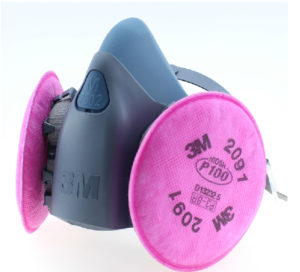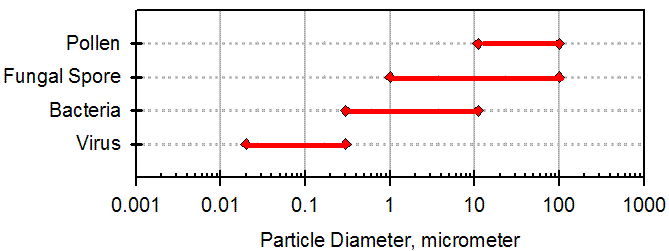DAYS / HOURS OF OPERATION (text to with inquiries – 24 / 7 but please include physical address, square footage and email)
214.912.4691
7 Days a Week Mon – Fri: 8 AM – 8 PM Weekends: Noon – 6 PM
COMMERCIAL / INDUSTRIAL CLIENTS ONLY – HOMEOWNERS & RESIDENTIAL CLIENTS CLICK HERE
City of Dallas Green Building Clearance Post Construction IAQ (Indoor Air Quality) Testing (804.2)
Dallas Green Building Post-Construction IAQ Clearance Testing for 804.2 Certificate of Occupancy
Biomedical / Environmental Health & Safety Consulting & Field Testing With Industrial Hygiene & Microbiology expertise including Bacterial Contamination Testing
Novel Coronavirus SARS-CoV-2 / CoViD-19 Commercial / Industrial BioSafety Air & Surface Swab Testing & Consulting for Pandemic Response & Best Hygiene Practices
Based on our expertise in microbiology, disinfectant chemistry, respirators, indoor air quality testing as well as Industrial Safety, Health & Hygiene work.

P100 Respirator with 2091 Filters by 3M
214.912.4691 – Through years of performing environmental testing in the Dallas / Fort Worth – DFW Metroplex area, ScanTech has evaluated numerous risk factors that impact human health from the perspectives of both short term (acute effects) and long term (chronic health issues) impacts in the occupational health realm.
* ScanTech only performs IAQ inspections for COMMERCIAL / INDUSTRIAL CLIENTS
ScanTech can check for the following key indoor air quality level indicators (many with time-based datalogging available) and have a report for you at the time of the onsite visit:
- Formaldehyde (HCHO)
- VOCs (Volatile Organic Compounds)
- Carbon Dioxide (CO2) – measurement of fresh air dilution that tracks with VOCs
- Carbon Monoxide (CO) – a dangerous from combustion byproducts
- Respirable Dust Particles in PM2.5 (fine) and PM10 (coarse) size regimes
- Oxygen Levels
- HEPA Filtration and other central air purifier efficiency (MERV Rating)
- Pressure differentials between inside and outside (affects contamination potential)
- Relative ventilation levels – critical to know in newer buildings that are tightly built
Specialized Optional Air Testing
- City of Dallas Green Building Post Construction IAQ Clearance Testing 804.2 https://emfsurvey.com/dallas-green-iaq-clearance-testing-post-construction-804-2-certificate-of-occupancy/
- Surface Swab & Air Testing for Novel Coronavirus SARS-CoV-2 which causes CoViD-19
- Mold Testing & Inspection including air samples, tape lifts and visual inspection
- Bacterial ATP, Microorganism, Parasite & Bio-Film issues including Legionella
- Radon Rn-222 Levels (alpha emitter lung carcinogen found in Texas including Dallas)
- Ozone levels testing – ozone is a oxidizing respiratory irritant
- Hydrogen Sulfide (H2S) – toxic sewer gas that has a foul odor
along with atmospheric factors such as:
- Temperature
- Relative Humidity
- Absolute Humidity
- Mixing Ratio, Vapor Pressure, Dew Point
- Barometric Pressure (to judge whether the structure is under positive or negative pressure with respect to the outside air)

National Ambient Outdoor Air Quality Standards set by the EPA (Environmental Protection Agency)
Many residents of the Dallas / Fort Worth area suffer from the following symptoms, ailments, and diseases – much of which can be traced either directly to air quality and composition or is exacerbated by poor air quality:
- Allergies & Sinus Infections – (high particulate counts and VOCs, formaldehyde)
- Chronic Allergic Rhinitis – (bio-aerosols)
- Eye irritation – (formaldehyde, hydrogen sulfide, VOCs)
- Congestion – (high particulate counts and VOCs, formaldehyde)
- Inflammation – (formaldehyde, VOCs)
- Fatigue – (carbon monoxide, carbon dioxide)
- Insomnia
- Headaches – (carbon monoxide)
- Dizziness – (carbon monoxide)
- Cognitive issues including difficulty focusing
- Nausea
- Coughing – (high particulate counts, mold, MVOCs)
- Asthma & other breathing difficulties – (MVOCs, high particulate counts, ozone)
- Bronchitis – (irritation of the lung bronchi)
These issues can contribute to and/or be symptomatic of more serious ailments such as:
- COPD (Chronic Obstructive Pulmonary Disease)
- Hypersensitivity Pneumonitis
- Carbon Monoxide / Carbon Dioxide Poisoning
- Autoimmune Disease
- Cardiovascular Disease
- Stroke
- Lung Cancer
- Leukemia
- Non-Hodgkin’s Lymphoma
- Neurological issues due to chemical exposure and/or oxygen deprivation
In many cases, a simple series of air quality tests that detect and report important metrics such as respirable particle levels, VOCs, formaldehyde levels, radon gas, carbon monoxide, carbon dioxide, oxygen levels, etc. can narrow down the issue(s) responsible. Very often, mitigation is relatively inexpensive and well worth the modest investment.
While ScanTech can make suggestions on how to clean up your air, we are not an equipment vendor or installer, so there is no conflict of interest in selling you products that you don’t need. (or that may make things worse)

ScanTech Residential Service Map Dallas Fort Worth DFW
- Nanotoxicology testing for evaluating the safety of nanomaterials which being incorporated in many modern manufactured products. We will collect and send samples to labs that are able to analyze important characteristics such as particle size, charge, solubility, geometry, aspect ratio, etc. in order to determine potential biological impact. The environmental effect of many nanoparticles are largely unknown and currently subjects of scientific research.
Cities for commercial indoor air quality (IAQ) inspection services include: Dallas, Fort Worth, Houston, Austin, San Antonio, Plano, Highland Park, University Park, Park Cities, Arlington, Grapevine, Frisco, Denton, McKinney, Allen, Lewisville, Irving, Mesquite, Bedford, Euless, Richardson, Coppell, Grand Prairie, Garland, Addison, Farmers Branch, Rockwall, Carrollton, Parker, Rowlett, Lucas, Fairview, Park Cities, Keller, Roanoke, The Colony, Highland Village, Lake Dallas, Corinth, Prosper, Duncanville, Lancaster, Rowlett, Royse City, Trophy Club, Southlake and Hurst. Counties served include Dallas, Collin, Denton, Tarrant and Rockwall County.







